I lean over the bucket just brought by volunteers from the white shed on the beach and I can't believe it. Is it really possible that these clumsy, barely seeing, fitting in a palm turtles in about 20 years will transform into one of the largest marine reptiles of this planet? They will reach almost 3 meters in length and over half a ton weigh! But only the bravest representatives of leatherback sea turtles will achieve adulthood. From the moment of their first heroic hike into the ocean, they are exposed to many dangers, including predators, poachers, and drifting garbage which they often confuse with food. That's why a group of volunteers from Todos Santos in Mexico takes the hatchlings under protective umbrella. We had the pleasure to join them and say goodbye to the newborn turtles before ocean waves take the little ones away.
Our motorcycle journey through America is a chance to fulfill many dreams. For me, many of them are connected with participation in these captivating, mysterious spectacles of nature, inaccessible on a daily basis and to everybody. When the seeker mission appears and we have to go off the grid for some time. The desire to accompany the newly hatched turtles in their astounding journey to the ocean, came to me probably after watching one movie, little known, viewed by chance. I don't even remember the title, actually I don't remember anything but this one scene... Girl, the heroine of holiday love, experiencing moment of despair falls asleep on the beach.... and suddenly, in the middle of the night, in the moonlight, something extraordinary happens. The silent sound of cracking shells comes from the sand and small leathery heads emerge one by one. And so throughout the surrounding beach, after a moment, dozens of hatchlings push out through the sand and mud with all their might in their tiny fins to be taken by the nearest wave and enveloped in the marine womb. The scene is so beautiful and moving, sublime at the same time, that the girl is amazed, smiles and feels so happy that she can witness this happening.
It's winter in Mexico, February. We ride motorbike across Baja California and sleep on wild beaches, deserts, camps or backyards. The thrill of close encounter with wales still hasn't left us. After passing the famous city of La Paz, where the carnival takes place, we get to the beach with a sign of turtle and ban on driving. This strengthens my hope, especially when locals say the breeding season of turtles is ongoing. It seems we have a chance to see even adult females coming on the shore to lay eggs! After several weeks of beach vagabonding we are no longer such greenhorns when we see weird sand traces. We know they were made by crabs pulling their shells from the sea towards the thorny bushes on sand dunes where they can safely lurk, perhaps find a bigger house. Now we have to look for turtle traces. However, on the coast of Cabo Pulmo, a beautiful place of our debut in snorkeling, the locals direct us to the stony beaches. They give us even exact time when we can expect the turtles' visit on the shore. The scenic path through the dunes leads us to a beautiful place, where cliffs support rocky firmament and the landscape looks like from a fantasy novel. And there indeed, we find gigantic eggs, but made of stone, carved by the ocean that has been licking the coast for centuries. On every step there, from egg to egg, spooked crabs flicker under the stones.
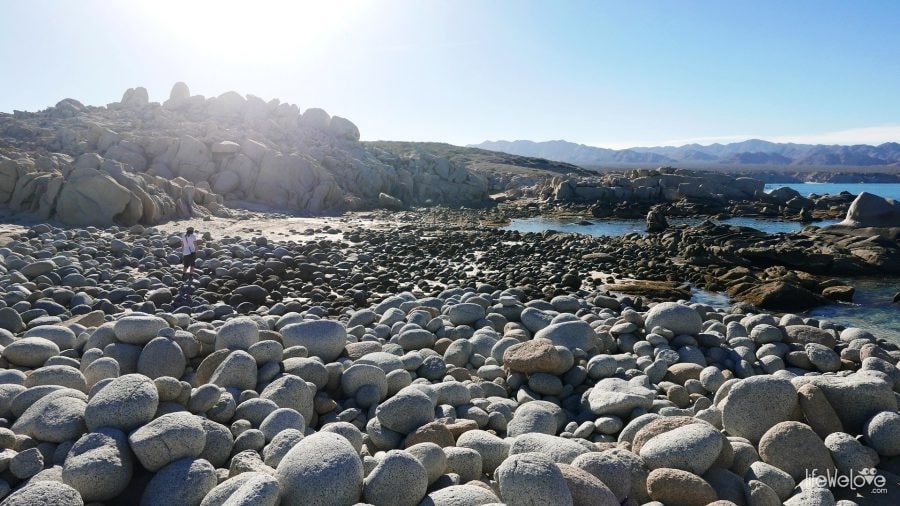
Slowly losing hope to meet turtles, our Meteor takes us to a town we have been hearing about for some time: Todos Santos. This is where volunteering friends of endangered species such as leatherback turtles operate. The rescue mission is led by Francesca Dvorak and her husband, owners of local company organizing eco-friendly outdoor activities, such as whale watching, kayaks, hiking etc. The idea of regular support for turtles was born during a night patrol they did with friends. Turtle eggs laid in the night are delicacy for many predators, including coyotes, raccoons, birds and even people treating them as aphrodisiacs in some cultures. Under such circumstances, statistics show that less than half of hatchlings are likely to survive. With help of people, who take the eggs to secured location, the chance rises up to 80%. And then, out of the hatched ones that painstakingly make their way to water, assisted by volunteers, the first days will survive 25%, and only 6% will achieve one year. And these reptiles are extremely important in the marine ecosystem. They mostly feed on jellyfish, so if there were no Leatherbacks, the number of jellyfish would rapidly rise. Jellyfish, in turn, feed on fish eggs. If leatherback turtles didn't regulate the number of jellyfish, this would cause decrease in fish number. Fish of course is essential food also for people in many regions of the world.
Apart from the aspect of the unbalanced ecosystem, whose effects would be felt globally, the leatherback turtle is simply a very unique reptile! These giants are the only remaining turtles on Earth that trace its evolutionary roots back more than 100 million years! Ancestors of leatherback turtles roamed the Earth roughly in times of T.Rex. And why are they called Leatherbacks? Unlike other turtles, they don't have a hard shell on the back of the neck (scientifically called a carapace), but they are protected by thick skin with embedded bone structures (osteoderm).
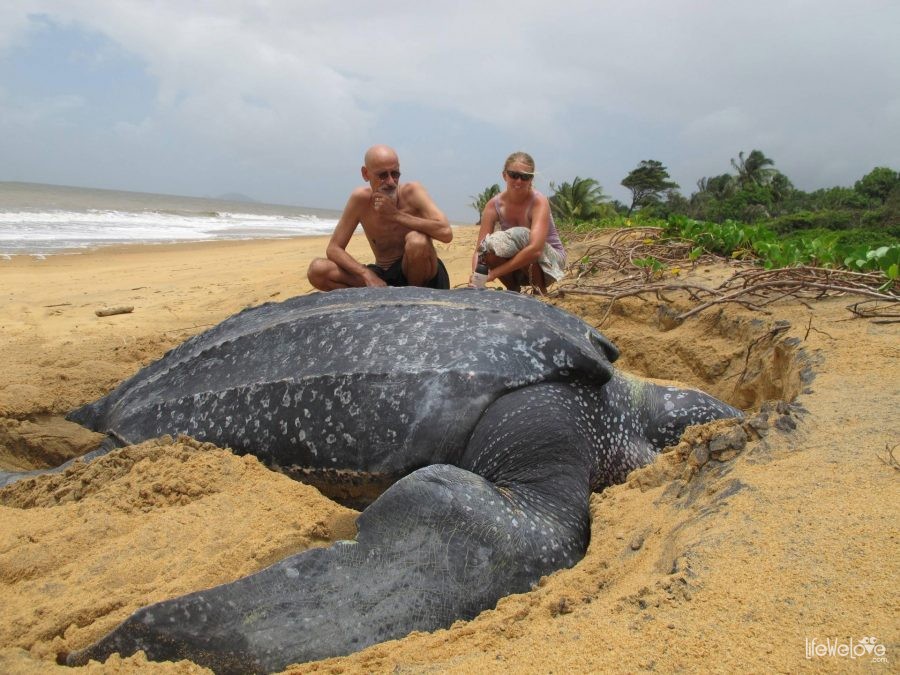
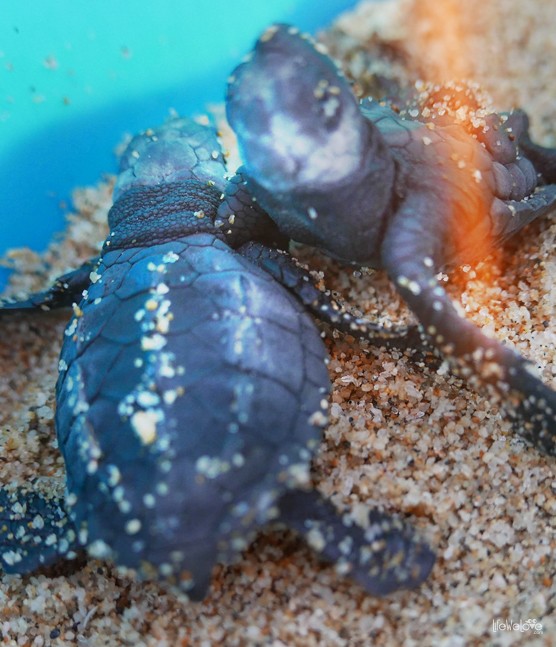
A few interesting facts about leatherback sea turtles
- They are the largest turtles on Earth, growing up to 2.8 m in length (4 - 7 feet), up to 2.7 m (8.9 ft) in front flippers, 900 kg (550 - 2 000 pounds);
- They are some of the oldest marine reptiles: their evolutionary roots date back to 100 million years ago;
- Their average life expectancy in natural conditions: 45 years;
- They are quite common in all oceans except the Arctic and Antarctic;
- They have an amazing ability to keep the body warm, even in freezing water;
- Instead of hard, bony shell, their inky-blue carapace is almost flexible and rubbery in touch;
- Ridges and grooves along the carapace improve their hydrodynamics;
- No turtle can beat them in diving - they can go down to a depth of 1200 m (4 200 feet) and can stay under water for 85 minutes;
- Despite their size, they are one of the fastest reptiles in the world, capable of achieving a speed of 35.8 km / h in water!;
- The temperature in the nest, where the egg is deposited, determines the sex of the turtle (girls are born in warmer temperatures);
- Hatchlings break out of eggs using special tooth;
- Their basic food is jellyfish, they can eat more than 45 kg a day, and they expel the salt contained in jellyfish in tears;
- They are endangered, under strict protection, and in many areas of their occurrence longline fishing is prohibited.
The heroic journey of baby turtles
At that memorable day we get to the beach before sunset to bid farewell to the brave troop of newborn turtles. Not only us. There are also other smiling couples, tourists, backpackers and excited children. No, actually all of us are very excited. We stand behind the thick line drawn on the sand, a starting line, all together in the row and we keep our fingers crossed and cheer. May these black little animals with funny wrinkled necks have strength and may odds be ever in their favour! We hope the current will carry them away from the fishing nets, drifting plastics and predators. And that in 20 years, they successfully return to the beaches of Todos Santos as sea giants, nearly 3 meter long to lay eggs, and extend the life of their ancient family.
Probably nothing depicts emotions of this evening as well as the video:
Save the sea turtles!
Leatherback turtles are one of the oldest marine species on the planet. They are extremely important to the ecosystem and simply beautiful, but threatened to extinction!
Everyone can undertake little, simple steps to help these remarkable reptiles survive on Earth.
See 5 simple ways to make a positive difference for sea turtles and many other marine species:
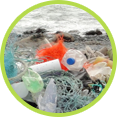
Clean up trash you see on the beach
Pick up the junk you spot on the beach, organize garbage collection with your friends. All these plastic bottles, caps and papers may be confused with food by many marine habitats and birds, not only turtles. They are swallowed by them, get into their stomachs and massively injure or kill. Reprimand if you see someone littering. Let's keep the coastline clear before a sea wave will take the junk and it will be too late.

Reduce chamicals
The chemicals you use on your lawn can wash into the coastal waters and kill many plants and animals. It is important to properly dispose of toxic chemicals, and even better, replace them with biodegradable solutions.

Turn off lights visible from the beach
Newly hetched turtles crawl towards the brightest light they see. The light and reflection from the moon are supposed to navigate hatchlings on their journey to the ocean. Artificial lighting confuses the turtles and causes them to head inland instead of out to sea, putting them in dangerous situations, exposing to predators, making them disoriented or lost. Artificial lights also discourage adult females from nesting on the beach. If you live near the beach, try to lower down intensity of the light at night, redirect or cover the lamps.
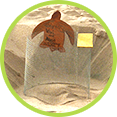
Be careful in sea turtle nesting areas
Like many people, we were also tempted to see these remarkable animals closely. But we have to do it very carefully, not to scare them, disturb and dazzle with flashlights or camera flash. We have to watch our steps in breeding areas to avoid entering a nest or trampling hatchlings on their way to water. If you know where the eggs are laid, you can surround them with a protective net, making it more difficult for predators to get to them.
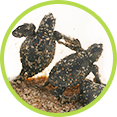
Volunteer
Organizations helping sea turtles like Tortugueros Las Playitas in Mexico are all over the world. When going for holiday, look in the internet where they are located, arrange your visit even for just 1-2 days. When volunteering, you not only help the sea turtles and make a positive difference in the environment, but also have an opportunity to witness amazing phenomena of nature which you will never forget. Also, don't forget to spread the info you've just learned, talk to people and help them understand the issue and what they can do to make sure they're not putting these important animals in danger.
Internet resources and more information:
- nationalgeographic.com/animals/reptiles/l/leatherback-sea-turtle
- conserveturtles.org/information-about-sea-turtles-leatherback-sea-turtle/
- news.nationalgeographic.com/news/2003/02/0224_030224_seaturtles.html
- leatherback.org/why-leatherbacks/habits-habitats
- mexconnect.com/articles/3862-rescuing-and-releasing-sea-turtle-hatchlings-in-todos-santos-mexico
- defenders.org
Spread environmental awareness, share the info.
Thank you for your attention :)
2


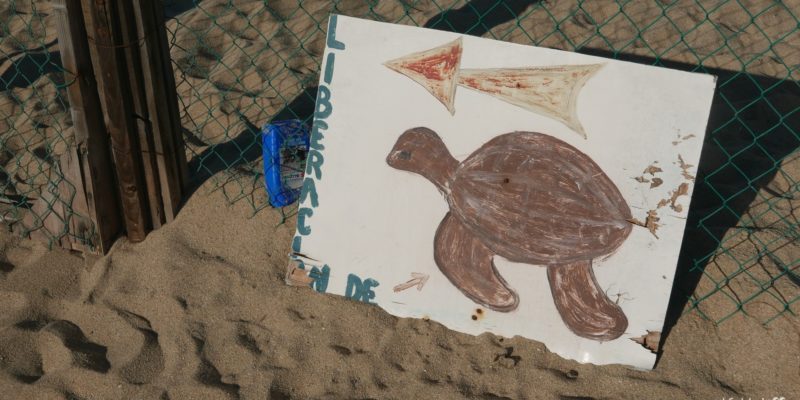
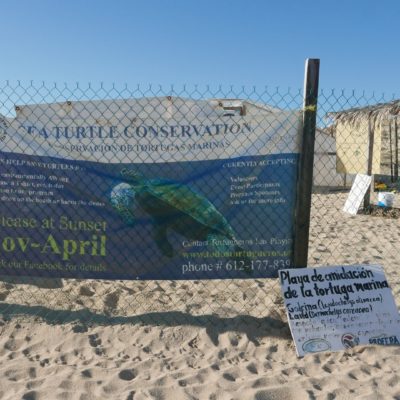
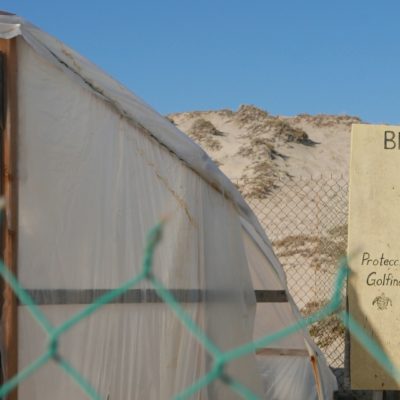

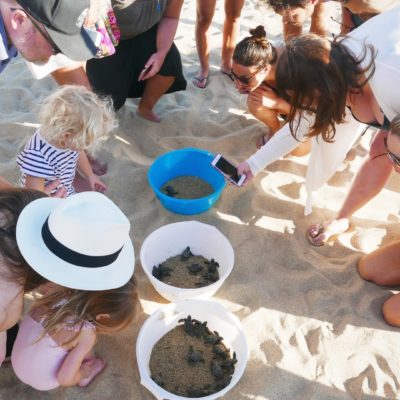
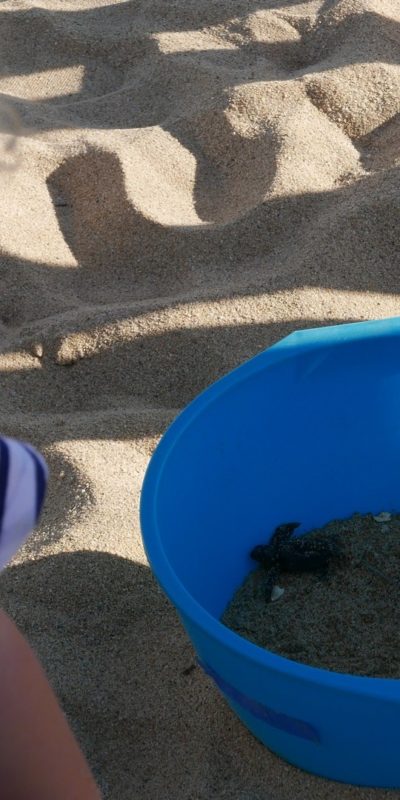


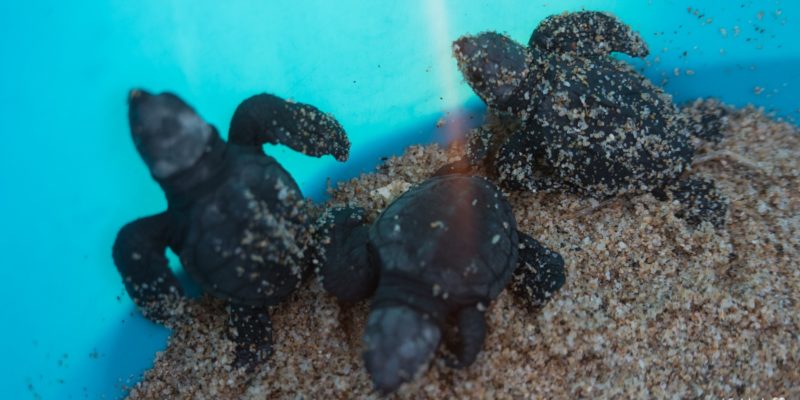
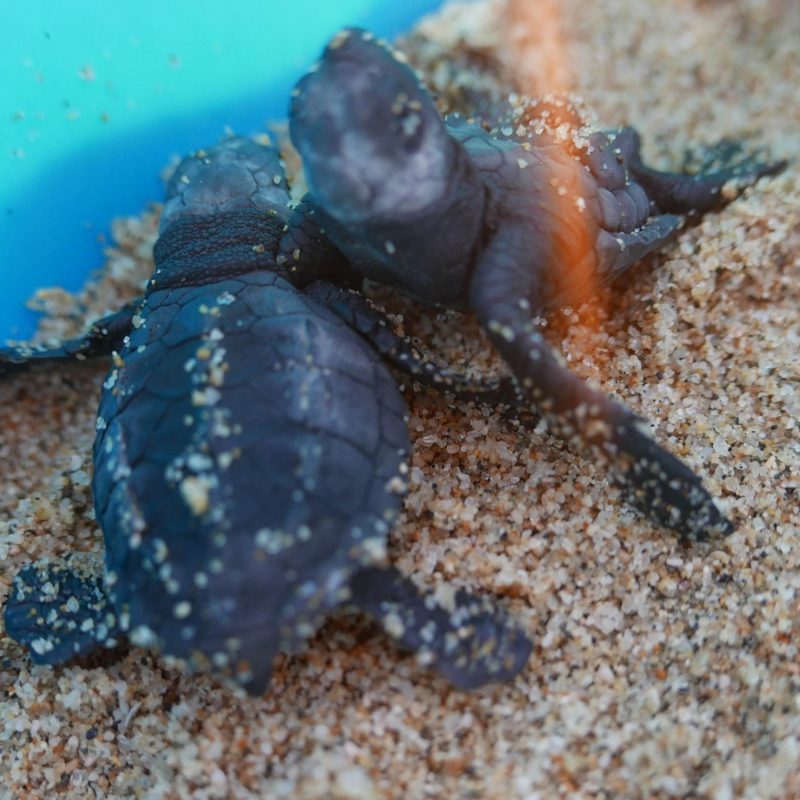

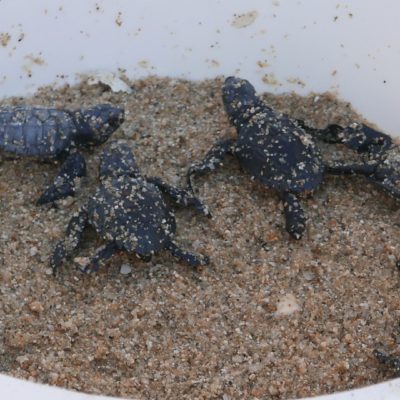
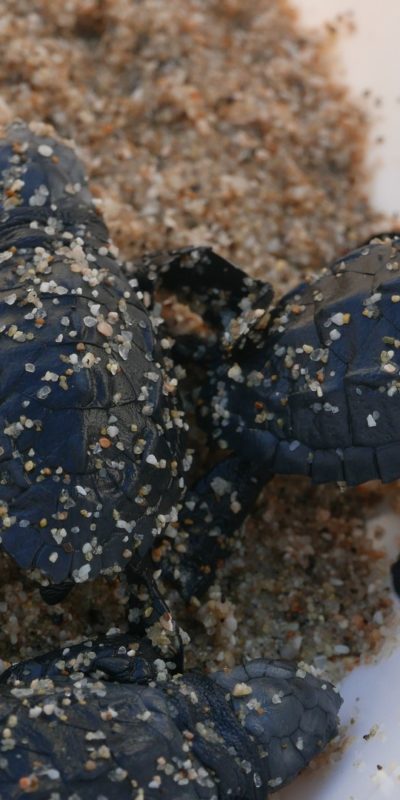
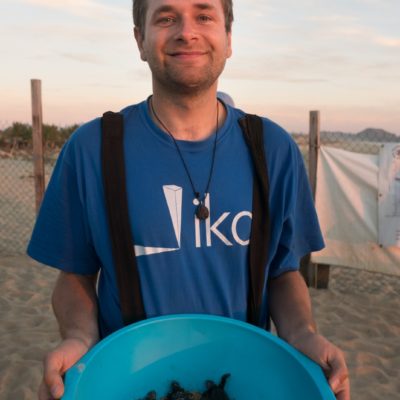
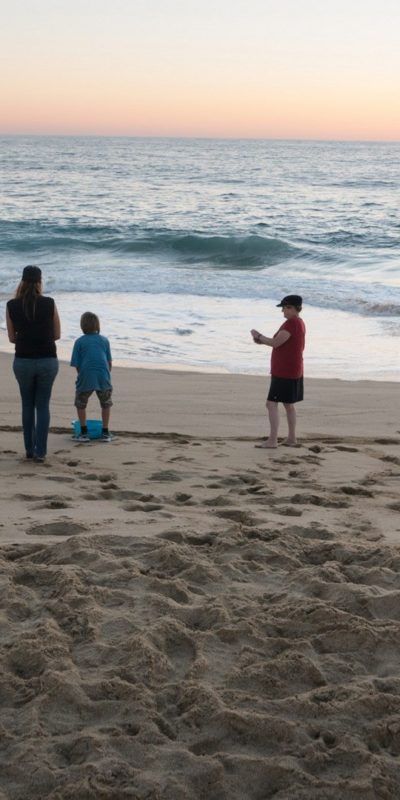
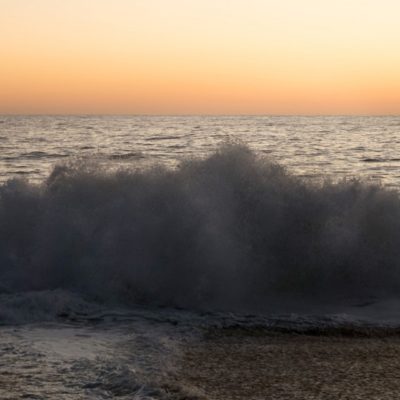
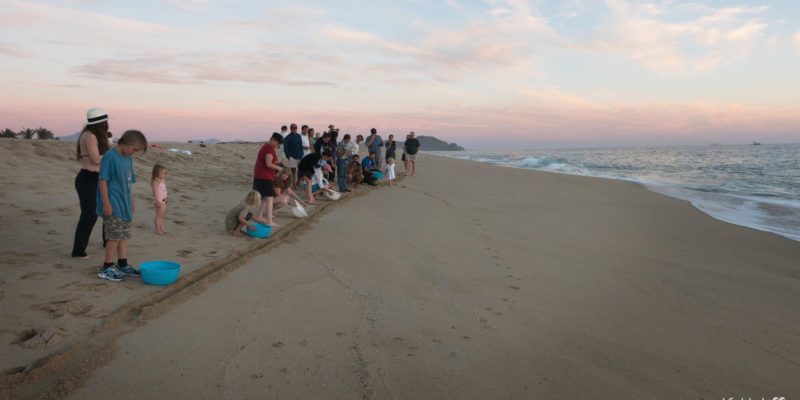
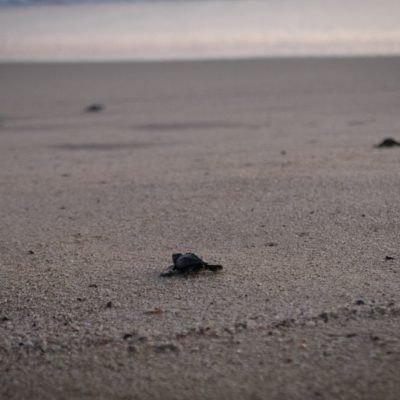

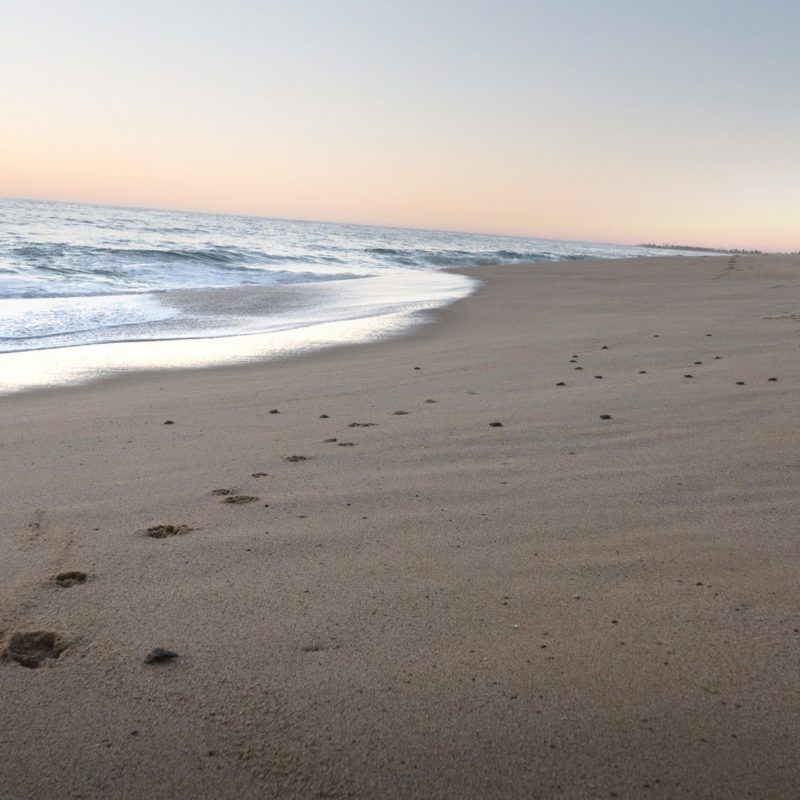

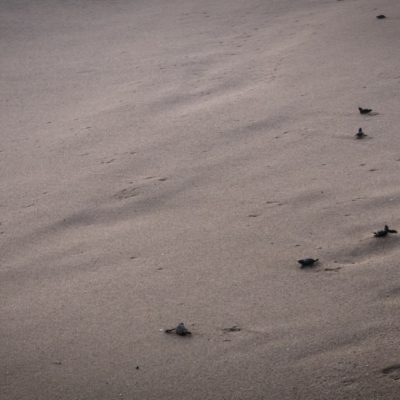

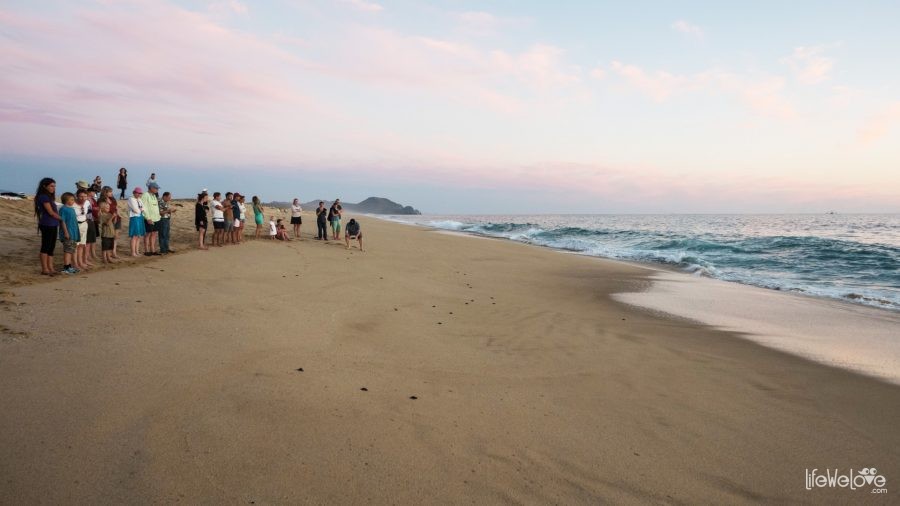
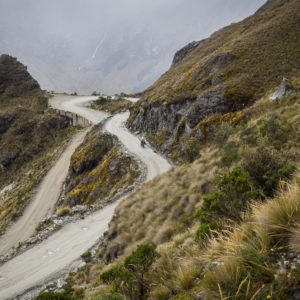
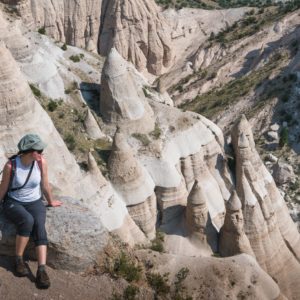
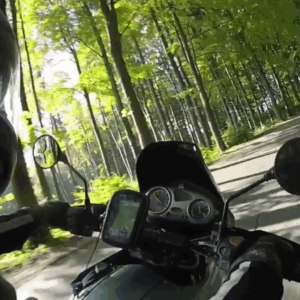
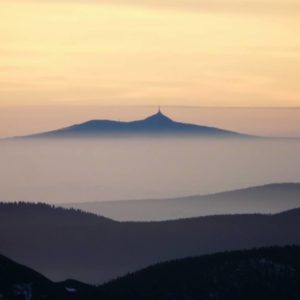
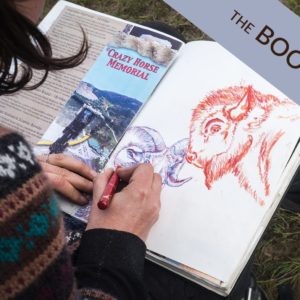

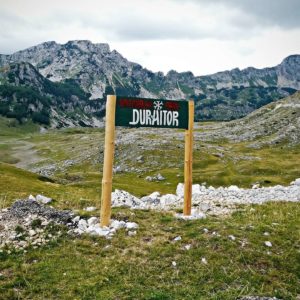


Liwia Klich
Polskie napisy przy filmie dostępne w wersji YouTube, zamieszczonej w poście tutaj: https://lifewelove.com/pl/ratujemy-zolwie-skorzaste-w-meksyku/
John
Wow, That’s a beautiful action!
Paty Rains
Such a professional job. Missing you both. Come back when you can.
Lifewelove
Thank you Paty. If we will go through Baja again, we’ll visit Baja Serena for sure :)